Being vegan or vegetarian in Thailand is easy! If you are a vegetarian or vegan, and you are about to set foot in Thailand, you may be worried and wondering if eating there is going to be a nightmare or if you will be able to enjoy the local flavors.

If you have already stopped to look for information on the subject, you will have seen that for many of us who do not eat meat, the countries of Southeast Asia, India or Nepal are destinations where it is very easy to find dishes without animal ingredients (in SEA, the Philippines is the exception that proves the rule, as it can be quite an odyssey there).
In Thailand in particular, which is the country I am going to talk about today, almost any typical dish can be ordered without meat, fish or egg, and the ever-popular noodles, rice or curries can be replaced by tofu or other soy derivatives.
You will be pleased to know that there are also many other dishes that only use vegetables or mushrooms as ingredients: morning glory, stir fried vegetables, or sautéed mushrooms, and in almost all restaurants you will be able to find vegetarian options, even if they are just a few.
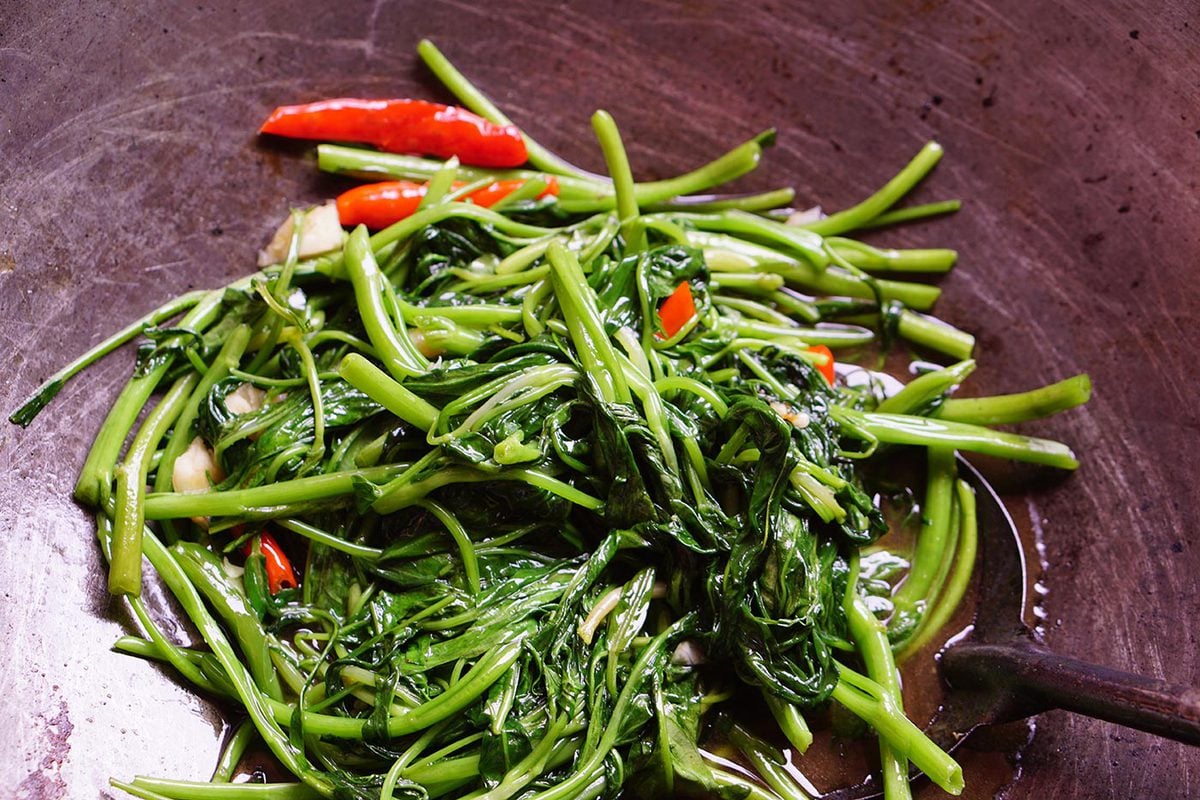
Check out our article on traditional Thai food for lots of delicious dishes.
Another plus is that in Thailand they do not usually use dairy products as ingredients in their dishes.
But be careful! On the other hand, it may be a bit more complicated for vegans or strict vegetarians who want to avoid sauces made from fish or oysters, which are the star ingredients in many Thai dishes. For example, pad thai and papaya salad contain fish sauce, and some curries have shrimp paste added to them.
And I can’t understand why, but some brands of soy milk contain dairy products.
But don’t worry, not all is lost, and we are going to give you two options in which you will be able to taste the local food without any problems.
I name them like this because those are restaurants that are almost exclusively aimed for tourists, which is why you will find many Western dishes on their menus. Vegetarian burgers or vegetable sandwiches are often featured on the first pages, but they almost always offer the “meatless” version of the local cuisine.
In these places you can try those dishes that everyone who has been to Thailand talks about, such as pad thai, pad kee mao or som tan, without having to worry about whether or not they contain ingredients of animal origin.
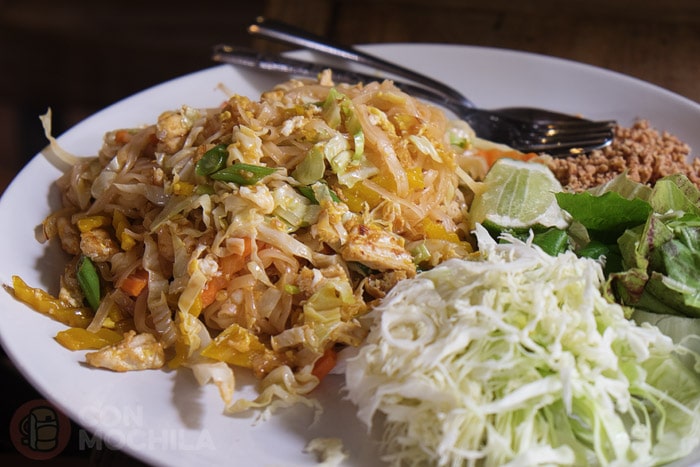
You will find those places in the frequented areas of the most popular destinations: Bangkok, Chiang Mai, Kanchanaburi or Koh Phangan, all of them with their vegan corners.
On our website we have been publishing the ones we are trying for a couple of years, you can find them with the tag “vegetarian restaurants”. You can also find the following articles:
This is the cheapest and most authentic option, although these restaurants are originally from China. They are usually quite simple restaurants where all the food is vegan.
“Jey” means “free from any ingredient of animal origin” and, despite being quite inconspicuous, these restaurants are everywhere and can be recognized by the yellow signs with red letters at the entrance.
The letters, which are also found on market stalls or on the packaging of vegan products, are like those in the following photos:
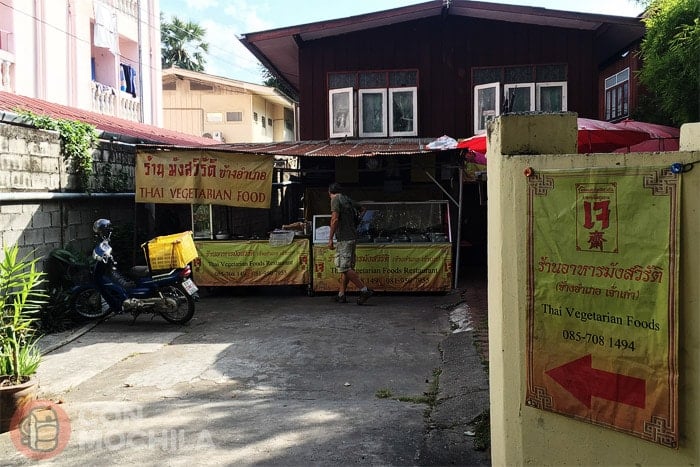
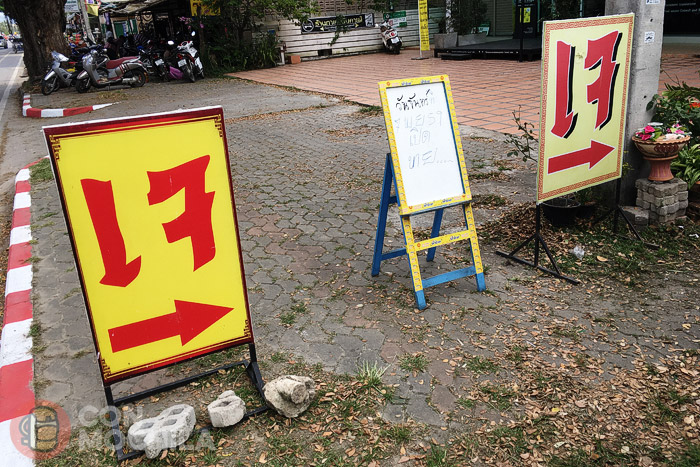
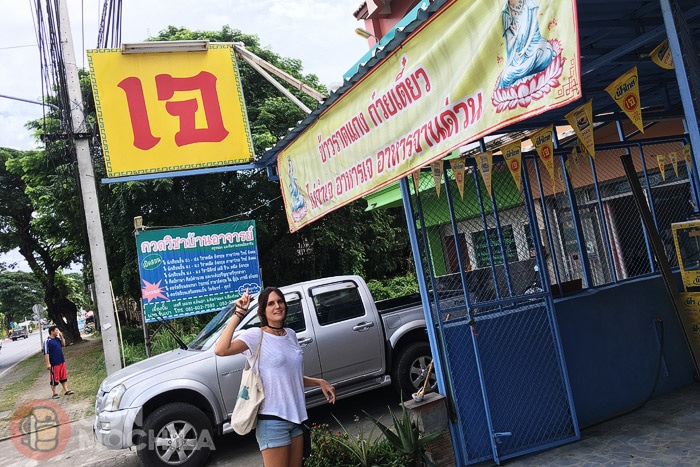
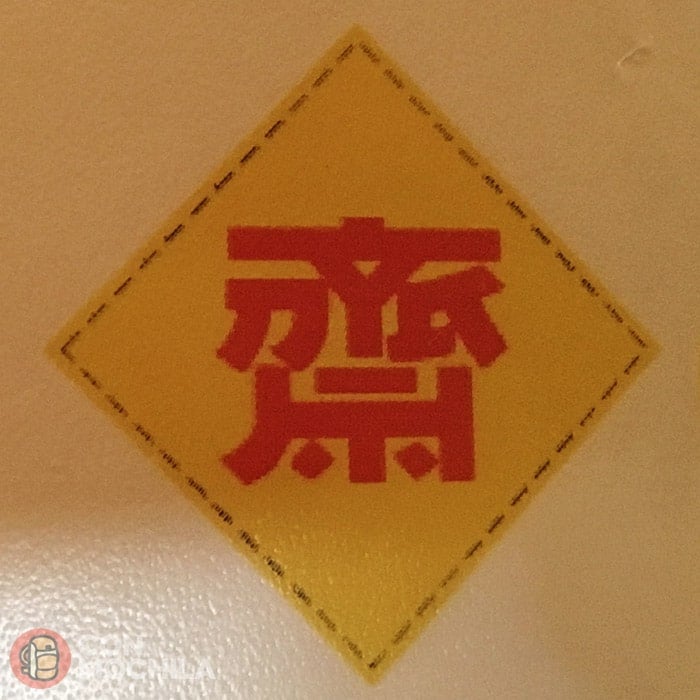
In most of these restaurants there is no menu, but rather trays displayed in glass cases with whatever they have prepared that day (although in Vientiane, Laos, we found one with a menu).
The dishes usually contain, in addition to vegetables, soy and mushroom substitutes, and can always be accompanied with rice or noodles.
Although these dishes may not look the best and may not be appealing to the eye, we assure you that they are exquisite and do not lack flavor.
Since we discovered them, whenever we see the letters we go in to try them, we are really addicted. In addition, it is a very, very economical way to eat, since with about 30 baht you get a generous plate and free water (and on top of that, less plastic waste is generated!).
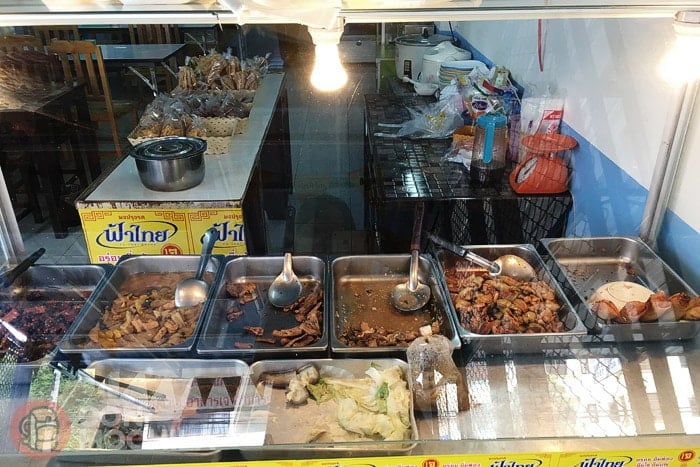
A funny fact is that every year in October the teet-sa-kan kin jay is celebrated: it is a vegan festival in which, for ten days, food free of animal ingredients is the star in market stalls and even chains such as 7/11 or Big C.
If you get bored of all that rice, remember that Thailand is such a touristy place and you will always have the option of looking for cuisine from other nationalities, like Indian restaurants where half of the menu is usually vegetarian or Israeli restaurants where you will find falafel, hummus or baba ganoush, to name a few examples.
In tourist areas in Thailand, almost everyone speaks English and is respectful of vegetarianism. However, as is the case in many places, the concept of vegan/vegetarian in the country is not always well understood, and you may often be told that something is vegetarian even if it contains fish sauce. To avoid confusion, when you want something vegan, say the magic word “ jey”.
To finish off the article, here is a small glossary with some basic words to communicate at mealtimes that will be very useful if you go off the beaten track, in local places or at food stalls in markets, which are very typical in Thailand.